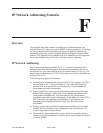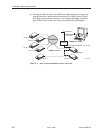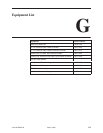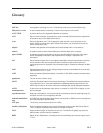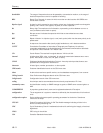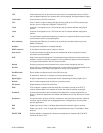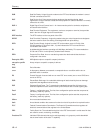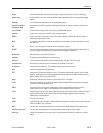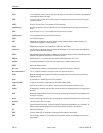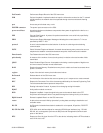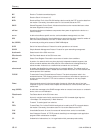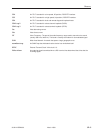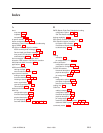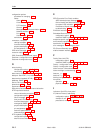
Glossary
GL-5
3162-A2-GB20-30
March 1999
One identifiable group of bits that includes a sequence of bits for control, framing, etc.
A high-speed connection-oriented packet switching WAN protocol using variable-length
frames.
A technique that separates bits into identifiable groups.
An extension to MIB II that defines additional objects for control of generic interfaces in
MIB II.
A command providing read-only access to SNMP MIB objects.
A physical connection to earth or other reference point.
High-Level Data Link Control. A communications protocol defined by the International
Standards Organization (ISO).
A computer attached to a network that shares its information and devices with the rest of
the network.
Hertz. A unit of frequency that equals one cycle per second.
Internet Control Management Protocol. Internet protocol that allows for the generation of
error messages, tests packets, and information messages related to IP.
Identity branch of the CSU menu tree.
A shared boundary between functional units.
The worldwide internetwork, which predominantly uses the TCP/IP protocol.
An interconnected collection of networks (also called an internet).
Internet Protocol address. The address assigned to an internet host.
International Standards Organization.
International Telecommunications Union. The telecommunications agency of the United
Nations, established to provide standardized communications procedures and practices.
Before March 1993 it was called CCITT.
Kilobits per second. One kilobit is usually taken to be 1,024 bits.
Local Area Network. A privately owned and administered data communications network
limited to a small geographic area.
Line Build-Out. The amount of attenuation of the transmitted signal that is used to
compensate for the length of wire between the transmitter and the receiver.
Liquid Crystal Display. Thin glass plates containing liquid crystal material. When voltage is
applied, the amount of light able to pass through the glass plates is altered so that
messages can be displayed.
Link Control Protocol.
Light Emitting Diode. A light or status indicator that glows in response to the presence of a
certain condition (e.g., an alarm).
The physical connection between one location and another used for data transmission.
The protocol that regulates the communication between two network nodes.
A trap that identifies the condition of the communications interface (linkDown or linkUp
traps).
frame
frame relay
framing
Generic-Interface
Extension MIB
Get (SNMP)
ground
HDLC
host
Hz
ICMP
ID branch
interface
Internet
internetwork
IP address
ISO
ITU
kbps
LAN
LBO
LCD
LCP
LED
link
link layer protocol
link trap



